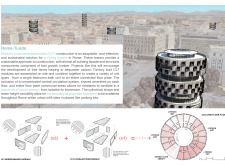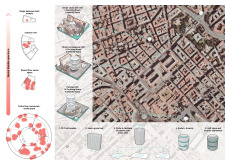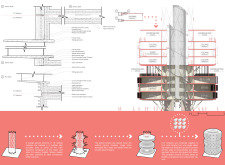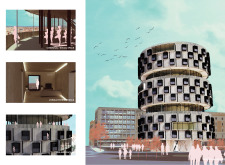5 key facts about this project
Innovative Use of Material and Design
At the core of the Rome-Tunda project is the use of Cross Laminated Timber, a sustainable material known for its structural integrity and environmental benefits. The design incorporates various components, including glulam beams for enhanced stability, steel connectors for structural anchorage, and mineral wool insulation to promote energy efficiency. This careful selection of materials not only supports environmental sustainability but also allows for rapid on-site assembly, facilitating efficient construction timelines.
The project features a cylindrical form that allows for flexible modular units. These units can accommodate different living arrangements, from single-bedroom units to larger family spaces, thus catering to diverse occupancy needs. Communal spaces are strategically placed within the layout to foster interaction among residents, encouraging a sense of community while maintaining privacy.
Enhanced Spatial Configuration
The central circulation core enhances accessibility throughout the building, ensuring residents can move between private and communal areas with ease. The unique circular layout offers varied sightlines and natural light penetration, resulting in a strong connection between indoor and outdoor environments. Shared amenities, like kitchens and lounge areas, are distributed across different floors, promoting social engagement and facilitating communal activities.
The architectural design skillfully blends functionality with aesthetic considerations, characterized by alternating textures and patterns on the façades. This variation not only contributes to the visual appeal but also helps integrate the structures into the existing urban landscape. The project’s adaptability allows it to fit into underutilized spaces in Rome, contributing to urban infill and efficiently addressing housing shortages without expanding the urban footprint.
Exploration of Architectural Details
This project encapsulates numerous architectural ideas that support sustainable urban living. Through the combination of modular construction, robust material selection, and a careful layout, Rome-Tunda represents a practical approach to modern housing challenges. The design stands as a case study for future residential developments that aim to balance environmental responsibility with community-centered living.
To gain deeper insights into the project’s full scope, including architectural plans, sections, designs, and ideas, readers are encouraged to explore the project presentation. Discover how Rome-Tunda redefines co-living in an urban context while promoting a sustainable future.


























